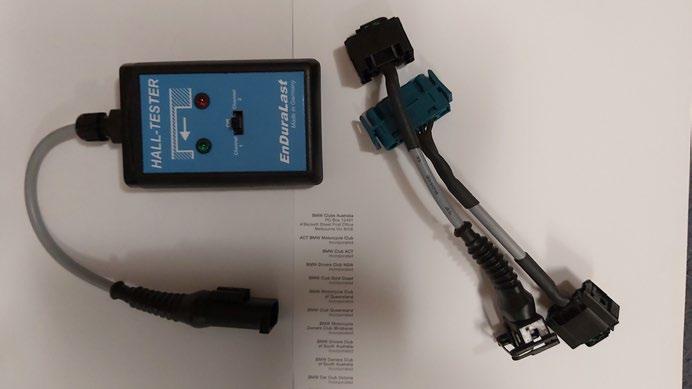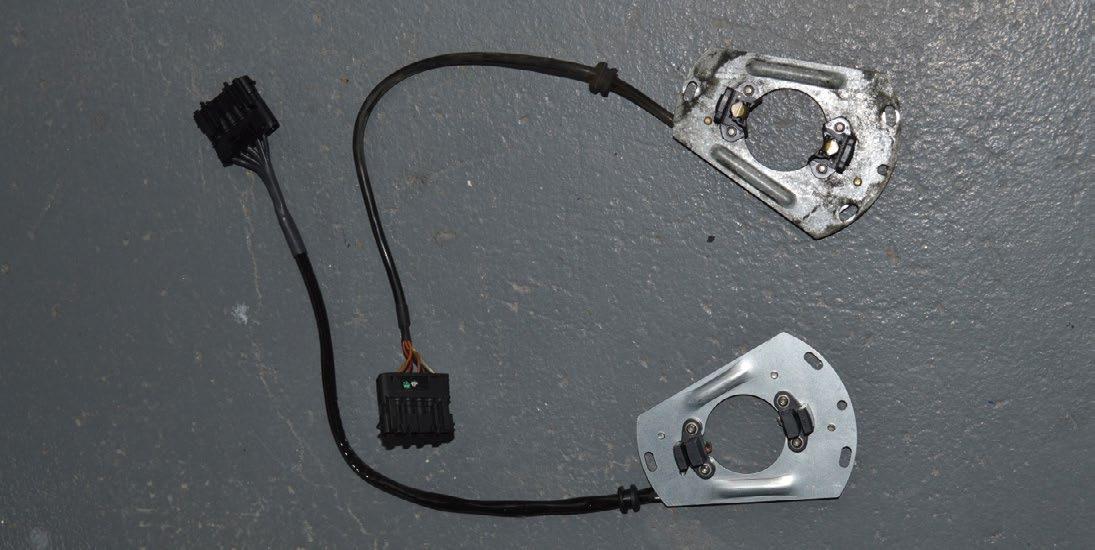
3 minute read
iN THE ClUB ToolBoX
By Tony Gray, Member #3905
The second tool selected in this series was prompted by a comment from our learned co-editor who mused about the club tool list - WTF is an Enduralast Hall Effect Sensor tester? Well for those similarly disposed to our august (indeed it is Tony) co-editor#1 sit back and be informed.
OK let’s go straight to Dr Google and the Wikipedia explanation of a Hall effect sensor: A Hall effect sensor (or simply Hall sensor) is a type of sensor which detects the presence and magnitude of a magnetic field using the Hall Effect. The output voltage of a Hall sensor is directly proportional to the strength of the field. It is named for the American physicist Edwin Hall.
Right got that? No me either but I am sure Les Fitzpatrick is saying something like ‘ho-hum get on with it’. Let’s go back to the basics and understand what this tool does and why it resides in the BMWMCQ toolbox.

‘Older’ motorbikes (and that applies to half of my garage) had a simple ignition system that comprised in its most basic form of a battery/ ignition coils/contact breakers/spark plug. The element of this simple system that required the most care and attention was the contact breaker. This very simple device could be termed as a switch or trigger that opened and closed with the rotation of the crankshaft to fire the spark plug at the appropriate point in the cranks rotation. The parts of the contact breaker were subject to wear and needed regular maintenance. The advantage of the points system is that they are cheap and you could carry a spare set to affect any required roadside repair. Just ask any ‘old’ airhead rider as to why they carry the aluminium wrapper from a cigarette packet in their toolkit even though they never smoked!#2
Modern bikes have fully sealed electronic ignition systems that do not require any maintenance
and are very reliable. If they fail however you stop. They are basically irreparable. There was a ‘middle ground’ in the transition from the earlier to later form of ignition adopted by BMW in the 80’s and 90’s that replaced the contact breaker component with a Hall Effect Sensor that basically performed the same task but in a maintenance free component. This Hall Effect Sensor resides in behind the front alternator belt cover and requires the removal of the belt and lower pulley to access. It is basically maintenance free but with age (bikes with this system are typically 25 + years old) components, especially wires become heat affected and fail. This little tool allows the mechanic to plug in the tester (there are two different connector plugs available) and test whether the Hall Effect Sensor is performing its switching function correctly. A replacement costs several hundred $, so knowing if Here it is. This failed one is on an R1100RT the Hall sensor is the cause of your ignition problem before shelling out your hard earned is worthwhile. Photos here were of an R1100RT which I had tested and showed the Hall sensor had failed and was replaced.
Hall Effect Sensors: out with the old, in with the new
#1 For those who hadn’t joined the dots I have been referring here to Duncan as clearly Cindy has a complete working knowledge and understanding of the Enduralast Hall Effect Sensor Tester. #2 The aluminium wrapping paper was widely use to clean the surface of the two contact faces by closing the points and pulling the paper between the mating faces.












